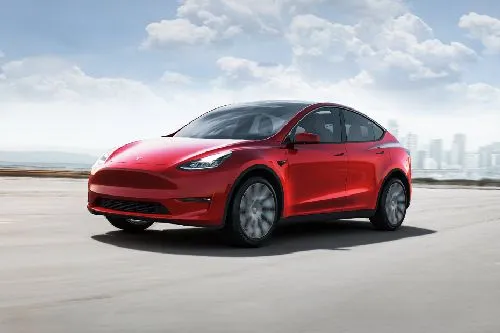
In an era where climate change and environmental conservation are at the forefront of global concerns, the need for sustainable solutions in every aspect of life has never been more critical. Among these solutions, sustainable public transit systems stand out as pivotal to reducing carbon footprints, alleviating traffic congestion, and enhancing urban mobility. This comprehensive exploration delves into the multifaceted benefits of sustainable public transit and how it is poised to revolutionize travel in urban and rural settings alike.
The Imperative for Sustainable Transit
As cities expand and populations burgeon, traditional transportation networks strain under increasing pressure. Conventional vehicles contribute significantly to air pollution, greenhouse gas emissions, and noise pollution. The rise of sustainable public transit offers a compelling alternative, promising to mitigate these adverse effects while improving overall transportation efficiency.
Defining Sustainable Public Transit
Sustainable public transit refers to transportation systems designed to be environmentally friendly, economically viable, and socially equitable. These systems encompass a variety of modes, including electric buses, light rail, and bicycles, all aimed at reducing dependency on fossil fuels and minimizing ecological impact. The crux of sustainable public transit lies in its ability to integrate green technologies and innovative practices to foster a more sustainable urban environment.
The Environmental Benefits
One of the most significant advantages of sustainable public transit is its potential to lessen environmental harm. Traditional vehicles emit high levels of pollutants, including nitrogen oxides (NOx) and particulate matter, which contribute to respiratory problems and exacerbate climate change. In contrast, sustainable transit options, such as electric buses and trains, produce zero tailpipe emissions. By transitioning to these cleaner technologies, cities can substantially reduce their carbon footprint and improve air quality.
Additionally, sustainable public transit systems often incorporate renewable energy sources, such as solar or wind power, to further diminish their environmental impact. For instance, solar panels installed on bus shelters or transit stations can generate clean energy, contributing to the overall sustainability of the transit network.
Economic Advantages
While the initial investment in sustainable public transit infrastructure can be substantial, the long-term economic benefits are considerable. The operational costs of electric and hybrid vehicles are generally lower than those of traditional combustion-engine vehicles due to reduced fuel and maintenance expenses. Moreover, the implementation of efficient transit systems can lead to significant savings in healthcare costs by improving air quality and reducing pollution-related health issues.
The economic impact of sustainable public transit also extends to job creation. The development and maintenance of transit systems generate employment opportunities across various sectors, including engineering, manufacturing, and urban planning. Furthermore, well-designed transit networks can stimulate local economies by enhancing accessibility and encouraging business development in previously underserved areas.
Social Implications
Sustainable public transit plays a crucial role in promoting social equity by providing accessible transportation options for all segments of the population. In many cities, low-income individuals and marginalized communities are disproportionately affected by inadequate transportation options. By investing in sustainable and efficient transit systems, cities can ensure that these communities have equitable access to jobs, education, and healthcare services.
Moreover, sustainable public transit systems can foster social interaction and community cohesion. The presence of well-connected and accessible transit options encourages people to engage with their surroundings and reduces social isolation. This connectivity can lead to a more vibrant and inclusive urban environment.
Technological Innovations Driving Sustainable Transit
The advancement of technology is at the heart of the transformation towards sustainable public transit. Several innovations are reshaping the landscape of urban transportation:
- Electric and Hybrid Vehicles: These vehicles are designed to operate with minimal environmental impact. Electric buses and trains, in particular, offer an efficient alternative to diesel-powered options. Advances in battery technology are also extending the range and improving the performance of these vehicles.
- Smart Transit Systems: The integration of digital technologies and data analytics is revolutionizing public transit management. Smart ticketing systems, real-time tracking, and predictive maintenance are enhancing the efficiency and reliability of transit services.
- Green Infrastructure: The development of energy-efficient transit infrastructure, such as solar-powered bus shelters and green roofs on transit stations, contributes to the overall sustainability of the transit network.
- Alternative Modes of Transport: The incorporation of bike-sharing programs, electric scooters, and car-sharing services into public transit networks offers additional sustainable travel options and reduces reliance on personal vehicles.
Case Studies of Successful Sustainable Transit Systems
Several cities around the world have successfully implemented sustainable public transit systems, serving as models for others to follow:
- Copenhagen, Denmark: Known for its extensive cycling infrastructure, Copenhagen has also invested heavily in sustainable transit options. The city’s electric buses and well-integrated bike-sharing programs exemplify its commitment to reducing carbon emissions and enhancing urban mobility.
- Portland, Oregon, USA: Portland has pioneered the use of electric and hybrid buses in its transit network. The city also emphasizes multimodal transit solutions, including light rail and bike lanes, to create a comprehensive and sustainable transportation system.
- Tokyo, Japan: Tokyo’s transit system is renowned for its efficiency and environmental consciousness. The city has introduced electric buses and advanced rail technologies, contributing to its goal of reducing greenhouse gas emissions.
The Future of Sustainable Transit
The future of sustainable public transit holds exciting possibilities as technology continues to advance and societal values shift towards greater environmental consciousness. Innovations in autonomous vehicles, hydrogen fuel cells, and further advancements in battery technology are expected to drive the evolution of transit systems.
Collaboration between government entities, private companies, and community stakeholders will be essential in shaping the future of sustainable transit. By working together, these groups can develop and implement solutions that address the challenges of urban mobility while promoting environmental stewardship and social equity.
Conclusion
Sustainable public transit represents a critical component of the broader effort to create a more sustainable and equitable world. By reducing environmental impact, fostering economic growth, and promoting social inclusion, sustainable transit systems offer a pathway to a healthier, more connected future. As cities continue to grow and evolve, the adoption of innovative transit solutions will play a pivotal role in transforming travel and enhancing quality of life for all residents.
For those seeking to stay informed about the latest developments in sustainable public transit, visit autocard.my.id for comprehensive insights and updates on this transformative journey.






